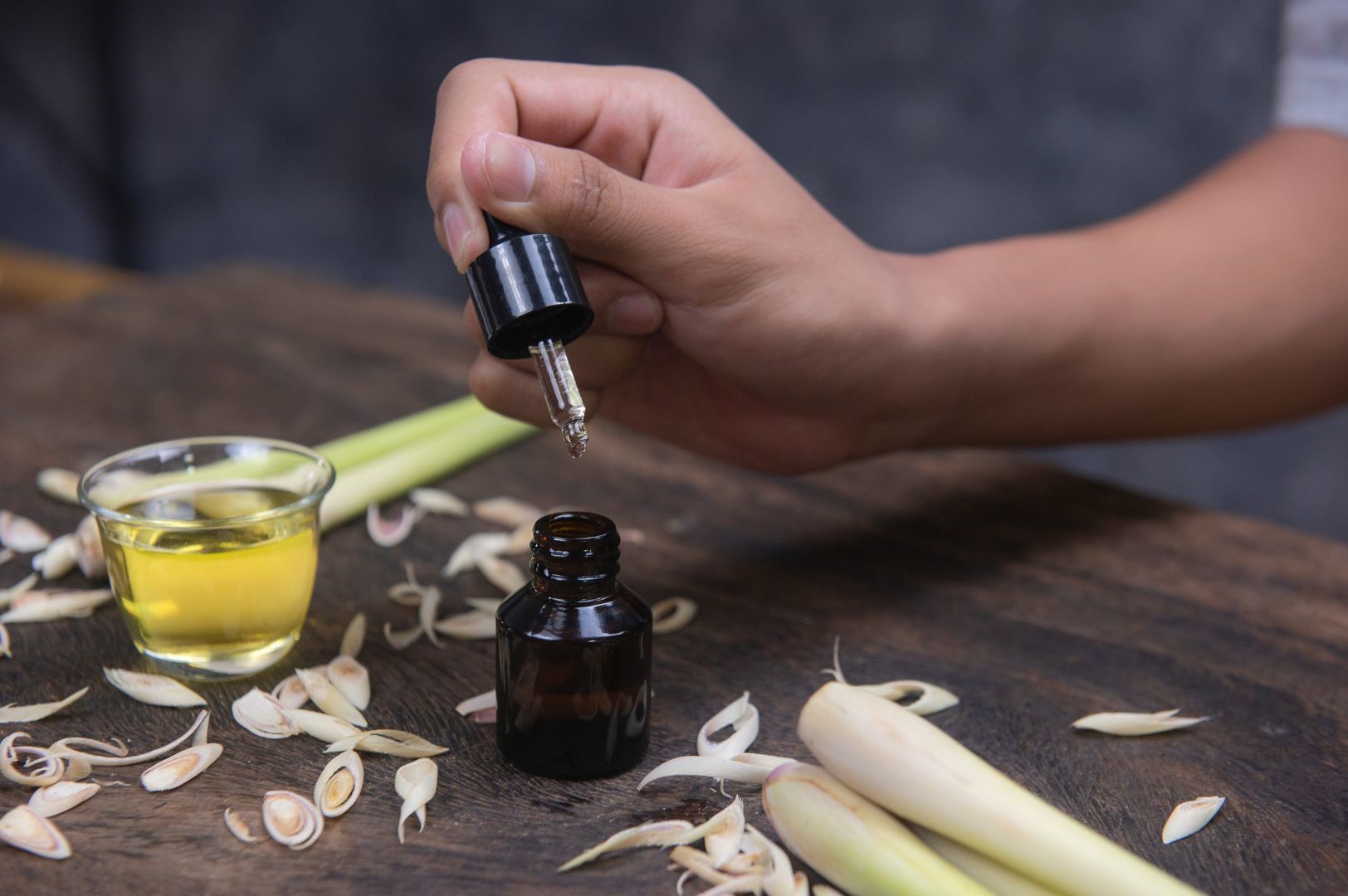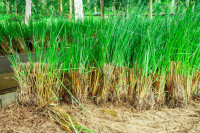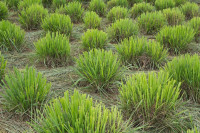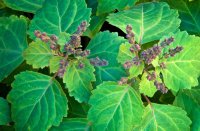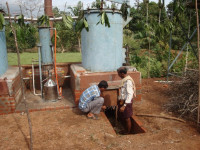Essential oils of aromatic grasses such as lemongrass are mostly obtained by distillation of above-ground biomass, mostly consisting of leaves. As these essential oils are lighter than water, they float on the water after a distillation process and render easy separation and collection. The distillation process could essentially be of two types:
- Water and steam distillation: The main parts are still, condenser, receiver, and calandria. Steam is produced in a field distillation unit, where water is boiled in the unit where the plant material is separated by a grid. The steam thus formed passes through the plant material, carrying with it the essential oil along to a water-cooled condenser. In a collection vessel, both essential oil and water are collected. Essential oil, being lighter than water, forms a layer on top and can be easily separated physically.
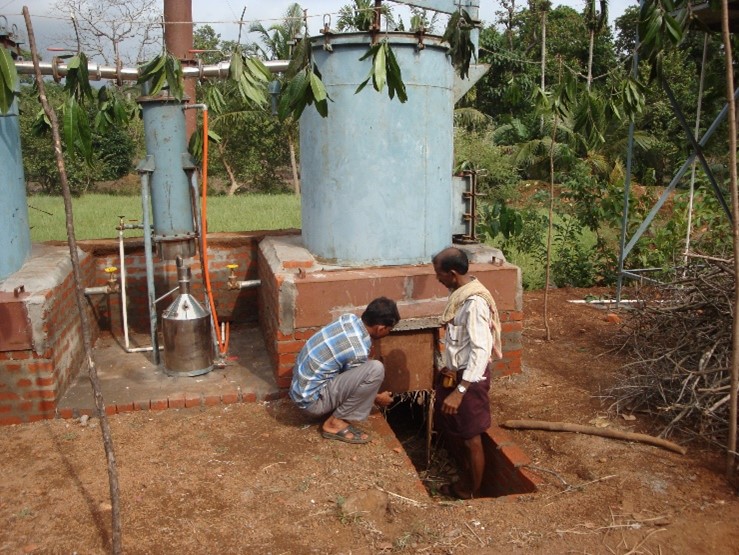
Water and Steam Distillation Unit
- Steam distillation: The main parts are still, condenser, receiver, and boiler. Steam is produced in a separate boiler connected to the distillation vessel in which the plant material is loaded. The essential oil is distilled in the same process described in 1. However, the pressure of the stem can be manipulated, while in the earlier method, the steam is produced at atmospheric pressure.
Steam Distillation Unit
In small farms where the quantities are small and if the farmer does not invest much in the distillation equipment, the first method, using a field distillation unit, is preferred as it is economical. If the area under the crop is large and continuous distillation is required, a distillation set-up using a steam boiler is recommended. Generally, the recovery and quality of essential oils obtained in both methods are similar.
The various features of the two types of distillation of essential oils are given in the table below:
Some features of distillation methods
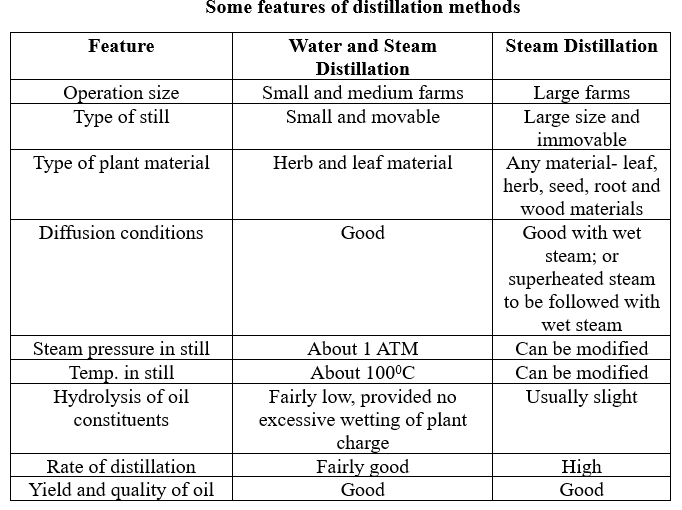
In lemongrass, the harvest stage plays an important role, and therefore, suitable harvest intervals need to be followed. It was found that the citral content in lemongrass oil increases with time and reaches a maximum in two to five months, depending on the season (1). Though oil is present in lemongrass leaves, in field conditions, the whole shoots, leaving the hard base part of the plant at a height of 10-12 cm, is harvested for distillation. The distillation time is 2.5 to 3.0 hours for obtaining optimum oil recovery. The oil recovery depends on the cultivar. The cultivar' Krishna' oil recovery ranges between 0.8-1.5% with an average of 1.0 %. The oil content and the chemical composition of lemongrass oil could vary to some extent due to the harvest season (1).
Effect of season on lemongrass oil content and quality (Prakasa Rao et al., 2005)

If 1 ton of lemongrass is distilled, an oil yield of 8-10 kg can be expected. In a year, lemongrass oil yield can vary between 200- 250 kg per ha.
Post-distillation: After the essential oil is separated from water and collected, some water will remain. Contact with water results in the deterioration of the essential oil. The remaining water should be removed using a separating funnel (2).

Separating funnel
Then, the associated moisture in the essential oil is removed by mixing it with 4% anhydrous sodium sulfate and then filtered to obtain a clear essential oil. The oil thus obtained is stored in airtight containers made of aluminum, glass, stainless steel, or HDPE. It is stored in a dark place. Any contact with water, air, or sunlight can spoil the quality of the essential oil.
The condensate water that is normally wasted is called hydrosol. Lemongrass hydrosol can be used in cosmetics, aromatherapy, herbal pesticides, and for isolating citral or 6-methyl-5-hepten-2-one (3).
Quality of lemongrass oil:
The major chemical constituents of lemongrass oil determine its quality. They are analyzed by gas chromatography (GC/GC-MS) in a quality testing laboratory. The major chemical constituents of lemongrass oil are citral (75-86%), geraniol (1-9%), and geraniol acetate (0.5-2.5%). Citral is the determining constituent for the marketability of lemongrass oil.
References
- Prakasa Rao, V.S., R.S. Ganesha Rao, K. Puttanna and S. Ramesh (2005). Significance of harvest intervals on oil content and citral accumulation in variety Krishna of lemongrass (Cymbopogon flexuosus). J. Medicinal and Aromatic Plant Sciences,27,1-3.
- https://stock.adobe.com/in/search?k=%22separating+funnel%22&continue-checkout=1
- Rajeswara Rao, B.R. Adinarayana, G., Niranjan Kumar, A., Rajput, D.K. and Syamasundar, K.V ( 2016). Chemical-profile variations in essential oils isolated from lemongrass (Cymbopogon flexuosus) biomass and condensate wastewater by re-distillation and solvent extraction techniques. Essential Oil Res. http://dx.doi.org/10.1080/10412905.2016.1167130
Further reading
Commercial Cultivation of Lemongrass for Oil Production
Distillation of patchouli for essential oil – Patchouli essential oil extraction
Patchouli cultivation guide – How to grow Patchouli Commercially for oil
Distillation of Sweet Basil for Essential Oil
Commercial Cultivation of Sweet Basil (Ocimum basilicum) for oil production
The Role of Herbal Leys in Sustainable Agriculture: Boosting Yields and Soil Health

